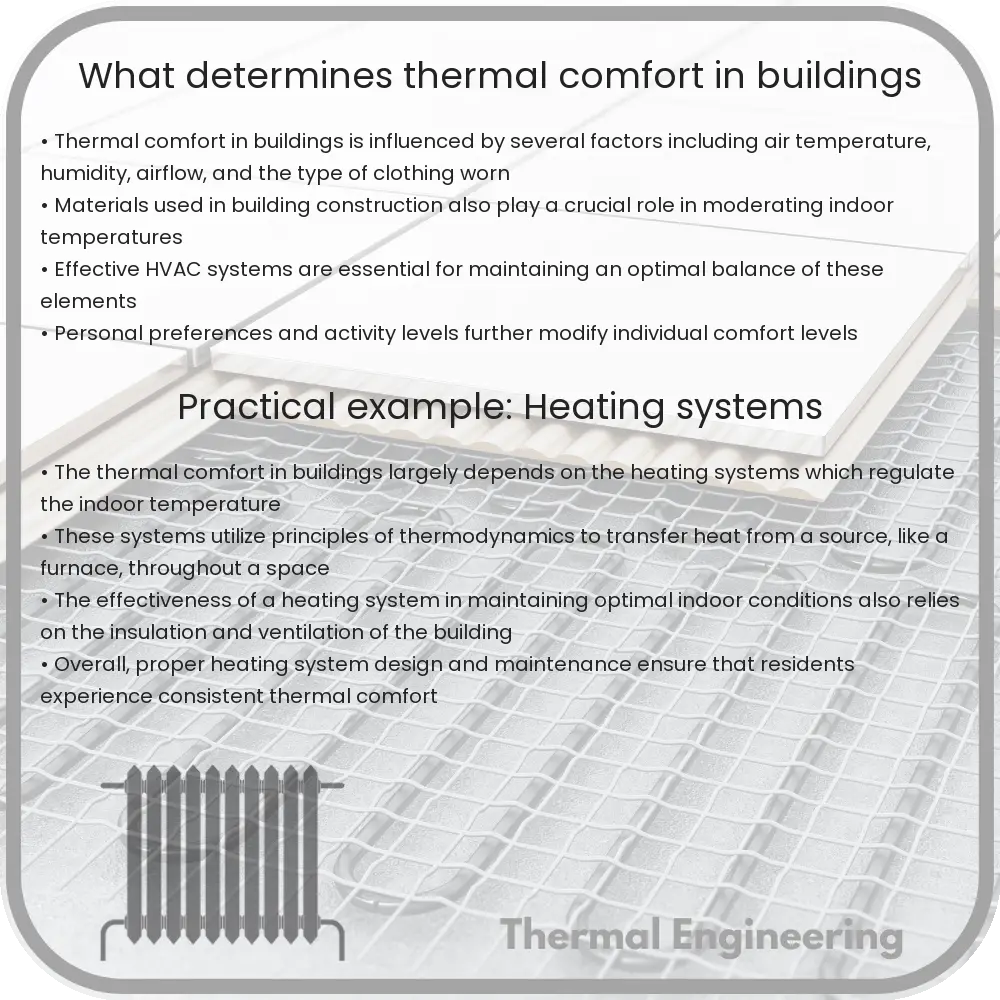Learn about thermal comfort in buildings, a crucial element of environmental engineering involving temperature, humidity, and air flow to enhance occupant satisfaction and energy efficiency.

Understanding Thermal Comfort in Buildings
Thermal comfort within buildings is a critical aspect of environmental engineering, affecting not only occupant satisfaction but also energy consumption and efficiency. It refers to the condition of mind that expresses satisfaction with the surrounding environment (ASHRAE Standard 55). A variety of factors determine thermal comfort, including air temperature, humidity, air velocity, radiant temperatures, clothing insulation, and metabolic heat.
Key Factors Influencing Thermal Comfort
- Air Temperature: This is perhaps the most obvious factor affecting thermal comfort. Generally, a moderate air temperature that neither feels too hot nor too cold is essential for comfort, typically ranging from 20°C to 24°C in most settings.
- Radiant Temperature: The average temperature of all the objects surrounding the body can influence comfort levels, as the body gains or loses heat through radiation.
- Air Velocity: The movement of air can enhance the feeling of comfort by increasing heat loss from the body when it is too hot, and its absence can make a warm, stagnant environment feel uncomfortable.
- Humidity: High humidity can inhibit the evaporation of sweat and make an environment feel uncomfortably warm, whereas low humidity can cause skin dryness and discomfort.
- Mechanical Systems: The design and operation of building heating, ventilation, and air conditioning (HVAC) systems play a significant role in regulating and maintaining optimal thermal conditions.
Physiological and Psychological Aspects
Thermal comfort is not only a matter of physical parameters of the environment but also involves individual physiological and psychological responses:
- Metabolic Rate: The level of activity a person is engaged in significantly affects thermal sensation. Higher metabolic rates (e.g., when exercising) generate more body heat, thereby increasing warmth.
- Clothing Insulation: The type and amount of clothing a person wears also alter thermal comfort by affecting the insulation level of the body.
The Role of Engineering
Engineers employ various strategies to manage thermal comfort in buildings effectively:
- Insulation and Building Materials: Using materials with good insulation properties and designing building envelopes effectively can significantly minimize unwanted heat exchange.
- Smart HVAC Systems: Advanced HVAC systems can adjust the indoor climate based on real-time data and pre-set preferences to optimize thermal comfort.
- Control Systems: Modern buildings often include automated systems that control temperature, humidity, and air flow based on inputs about environmental conditions and occupancy.
Conclusion
Thermal comfort in buildings is a multifaceted domain that blends science, engineering, and human physiology. By understanding and manipulating environmental conditions, engineers can create indoor environments that not only help conserve energy but also enhance the comfort and well-being of occupants.